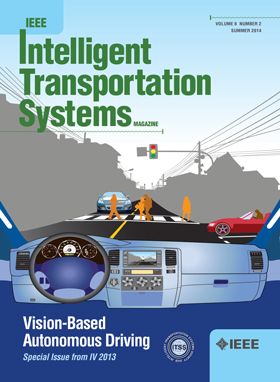A Combinatory AC and DC Charging Approach for Electric Vehicles
IF 7.9
1区 工程技术
Q1 ENGINEERING, CIVIL
IEEE Transactions on Intelligent Transportation Systems
Pub Date : 2024-10-04
DOI:10.1109/TITS.2024.3464591
引用次数: 0
Abstract
Reducing the battery charging time of an electric vehicle (EV) is one of the key factors to boost the widespread adoption of EVs. The commercial, off-board high power, dc fast charging station need high initial investment and maintenance cost. On the other hand, the standard on-board type-1 and type-2 ac chargers with电动汽车交流和直流混合充电方法
缩短电动汽车(EV)的电池充电时间是推动电动汽车广泛应用的关键因素之一。商用车载大功率直流快速充电站需要高昂的初始投资和维护成本。另一方面,3.3~kW$ 至 19~kW$ 的标准车载 1 型和 2 型交流充电器需要较长的充电时间。本文提出了一种交流和直流相结合的充电方法,以提高电动汽车电池的充电率。所提出的组合充电方法提供了一种从车载 2 型交流充电器和动力传动系统集成直流充电器为电动汽车电池充电的技术。对于动力传动系统集成直流充电,利用电动汽车电机绕组的中性点 $(N)$ 和动力传动系统逆变器的负轨 $(O)$ 形成一个直流输入端口 $(N(+),O(-))$。通过该直流输入端口,可接受来自基于可再生能源的直流微电网、太阳能屋顶和其他电动汽车电池的电力进行充电。电动汽车动力传动系统逆变器作为集成交错直流-直流转换器(IDC)进行控制,接收来自直流电源的电力,并将电动汽车电机绕组重新用作滤波电感器。介绍了用于调节公共直流链路电压的控制方案,该方案接受来自 2 型交流充电器和集成交错直流充电器的电源。通过使用 Ansys Maxwell 和 Simplorer 进行有限元方法 (FEM) 协同仿真,验证了电动汽车电机和动力传动系统集成直流充电器的性能分析。为验证所提出的交流和直流组合充电方法,开发了一个按比例实验原型。
本文章由计算机程序翻译,如有差异,请以英文原文为准。
求助全文
约1分钟内获得全文
求助全文
来源期刊

IEEE Transactions on Intelligent Transportation Systems
工程技术-工程:电子与电气
CiteScore
14.80
自引率
12.90%
发文量
1872
审稿时长
7.5 months
期刊介绍:
The theoretical, experimental and operational aspects of electrical and electronics engineering and information technologies as applied to Intelligent Transportation Systems (ITS). Intelligent Transportation Systems are defined as those systems utilizing synergistic technologies and systems engineering concepts to develop and improve transportation systems of all kinds. The scope of this interdisciplinary activity includes the promotion, consolidation and coordination of ITS technical activities among IEEE entities, and providing a focus for cooperative activities, both internally and externally.
 求助内容:
求助内容: 应助结果提醒方式:
应助结果提醒方式:


